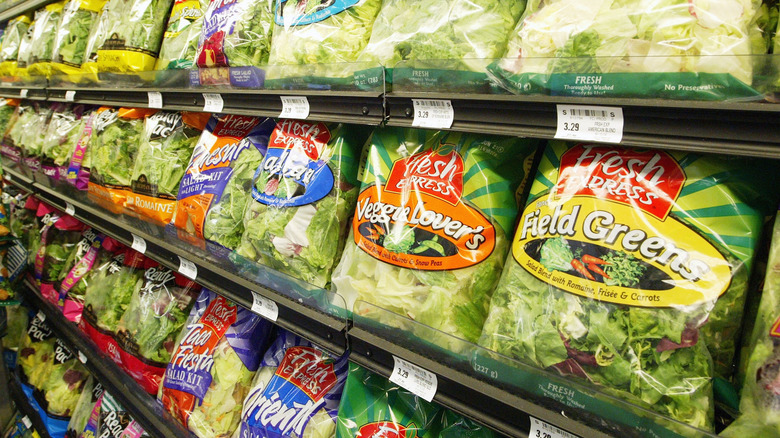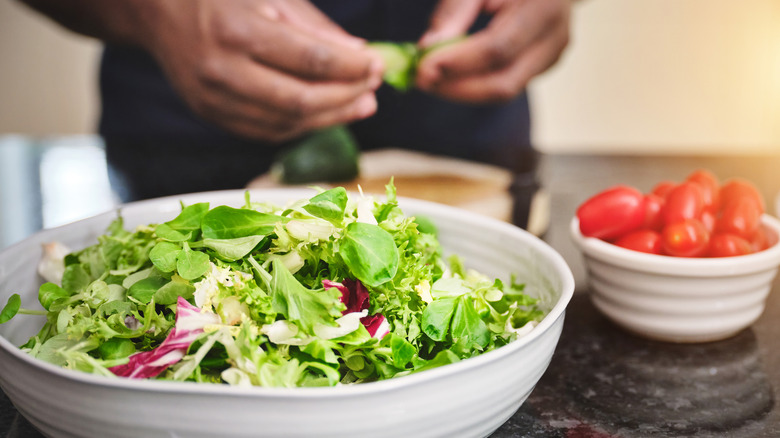When Buying Bagged Greens, Pay Attention To The Bottom Of The Package
There always seems to be at least one slimy piece in a bag of salad greens. We know the struggle. Foodies naturally want the freshest groceries, but bringing home a bag of spring mix only to find it half-spoiled is a bummer that happens to the best of us — and it sucks so bad every time. Don't let it happen to you anymore.
At the grocery store, pick up that bag of greens and inspect it from every angle. If those delicate baby spinach leaves have wilted or gone slimy, chances are the denser, heavier leaves will slide to the bottom of the bag. Either way, if you notice any off-colored, visibly wet greens, then pick a different bag. Another visual cue to keep an eye out for is bag inflation. When salad greens start to decompose, they emit carbon dioxide, which causes the bag to puff up. Depending on the bag's material, this isn't a guaranteed indicator, but looking for flatter packaging is always a good idea.
Not sure? Open up your bagged greens when you get home and take a deep whiff. If it smells off, it has probably spoiled. As a rule, less sturdy varieties, like arugula and baby spinach, tend to go bad faster. By day five, these greens have likely reached their threshold. Non-bagged greens tend to last longer, which can be a solid way to enjoy more radicchio, kale, endive, and cabbage.
Get the most out of your produce
While these visual cues are super helpful, sometimes you get a batch that leans more toward slimy than crispy. Is it still safe to eat?
Your bagged leafy greens become slimy due to natural decomposition. Salad greens also get exposed to bacteria through numerous natural outlets, which multiply and grow on the wet leaves, changing the physical structure of the vegetable and facilitating faster breakdown. Luckily, these bacteria are natural and unlikely to make you sick. (The exception is pathogens, which lead certain products to become the center of public recalls.) Generally speaking, you can pick around the slimy pieces and toss the wetter greens out. Hooray for avoiding food waste and saving money!
For maximum longevity, take your leafy greens out of the bag and dry them in a salad spinner to shake off any excess water. Then, transfer them to an airtight bag for their tenure in the fridge, and insert a paper towel on either side. This will soak up any water that leaks out. If you notice the paper towels getting soggy, replace them — it's that simple. In the worst-case scenario, a few slimy leaves serve as a visual cue to indicate you only have a day or two to use up the rest of the bag.

